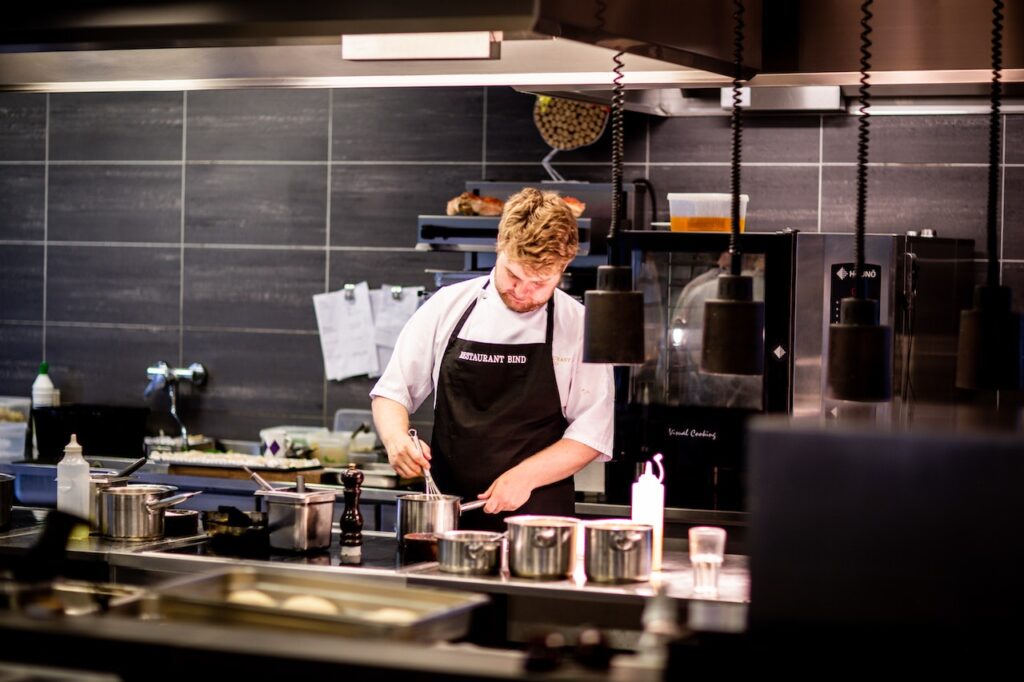As an Amazon Associate we earn from qualifying purchases.
Many home cooks and chefs have turned to cook steaks in a special French style rather than spending hours conventionally preparing them. However, does sous vide use a lot of electricity? Get to know all about it so you know that you can decide whether it is money, or time that you want to save.
Does Sous Vide Use a Lot of Electricity?
On average, a sous vide cooker uses between 800 and 1200 Watts of electricity. This is for the high-power cookers, which bring the water to the right temperature in a considerably short time. If you choose lower-wattage cooking methods, the electricity consumption will be less. However, it will take more time.

The special cookers for this technique have varying power inputs; therefore, the time they take to heat the water differs. Once the optimum temperature is reached, the low-wattage cooker will have to work more to maintain it.
If you calculate the number of times you use this special cooker and estimate the time it takes to cook, the electricity consumption will be low. Some research and calculations show that using electricity for this method for 72 hours will cost less than $3. However, every cooker has distinct electricity requirements.
The Different Kinds of Cookers and Electricity Use
There are various kinds of sous vide cookers, each of which may have a different electricity requirement. There are water ovens, immersion cookers, and even the conventional hot water pot on a hot plate or oven.
The electricity consumption of each of these cookers is different. Primarily because of capacity and even the time each of them takes to cook. Usually, novice cooks believe that a conventional setup using a stock pot and a hot plate may need less power. However, there can be some surprises for you here!
Electricity Consumption With Immersion Circulator
An immersion circulator is a large tub of water with a stick-like immersion heater that circulates water in the tub. This cooker may have various capacities. The power range for all these sizes is between 800 Watts and 1500 Watts.
You can select the cooker according to your requirements. Professional cookers require more powerful cookers. However, that does not mean that the electricity bill would be drastically higher. This is because powerful cookers might need more electricity, although it means that they would need less time.
The various brands that manufacture this kind of cooking equipment include:
- Anova Precision Cooker
- Breville Joule
- Inkbird ISV 100W
- Monoprice Strata Home Immersion Cooker
All these cookers are low on energy consumption, whereas they are good enough to create gourmet-style recipes at home.
Electricity Consumption With Sous Vide Water Oven
The water ovens usually consume between 800 Watts and 1000 Watts. However, this equipment takes slightly longer than the immersion circulator to heat the water. Therefore, the electricity consumption is higher. Secondly, the maintenance of water temperature will also need more energy.
However, since the water oven does not circulate the water, the electricity consumption balances out, and the overall expenditure on power will be the same as an immersion circulator. Most models are cost-effective due to no circulation, and the power usage is similar to a medium-sized light bulb.

Conventional Sous Vide Cookers
The simple cookers for this style of preparing meals that home cooks create by themselves consist of a pot of hot water that is either set in the oven or a hot plate to maintain the temperature. Surprisingly, this setup will require higher electricity because any usual home oven needs 2000 Watts to 5000 Watts.
This high power usage will last for hours if you keep the water pot in the oven. Similarly, hot plates consume between 1200 Watts and 3000 Watts. The temperatures are set between 120⁰Fahrenheit and 165⁰ Fahrenheit for hours. The conventional setup will cost the highest among all the options.
Another reason for higher electricity use in these simpler cookers is heat waste. If you set a pot of water on a hot plate, it will lose heat to the environment, and you will need to keep the temperature on the plate constantly high. This will add to the power consumption.
Sous Vide as an Energy Efficient Cooking Style
Many people wonder about electricity consumption due to the time this method of cooking takes. However, the reality is that you will be saving money on energy bills because of this method. This way of preparing food is considered an energy-efficient cooking style for your kitchen.
Some Related Questions
If you are new to this special cooking style, you will find more information through expert answers to people’s questions. Get to know more about power consumption by understanding these answers.
Does Sous Vide Cooking Take A Lot of Electricity?
No, this cooking style is about maintaining a temperature in a pot of water. Whichever cooker you use, the temperature can be achieved quickly, and then the maintenance is also easy. The overall electricity consumption in a few cooking hours will equal a light bulb.
Is Sous Vide Cooking Worth It?
Yes, if you like to eat soft, tender, and juicy steaks or other cooked meats, this method is worth the long hours of waiting. Similarly, if you want to prepare succulent vegetables and meals that do not require your attention, this method of preparing food is worth the electricity consumption and the long wait.
Conclusion
Do sous vide use a lot of electricity? The answer to this question depends on the equipment you use. However, this cooking technique only requires a little power as the temperature range is lower than conventional cooking.
